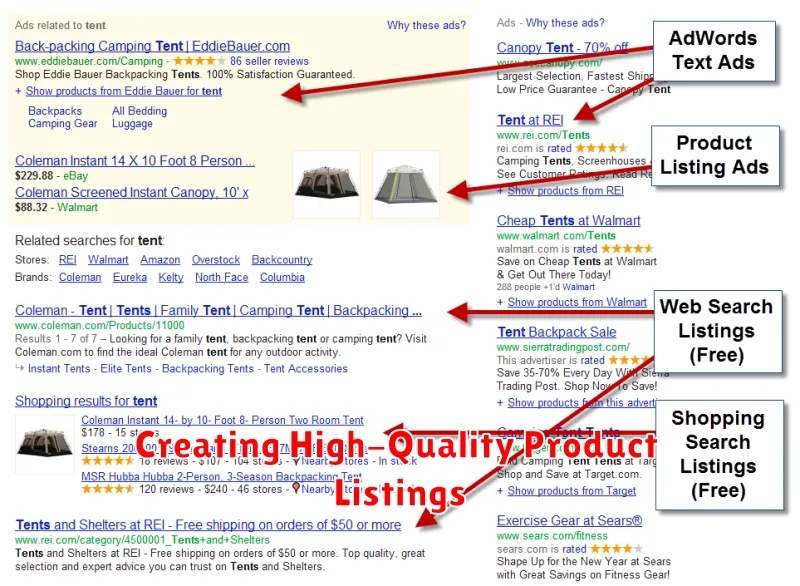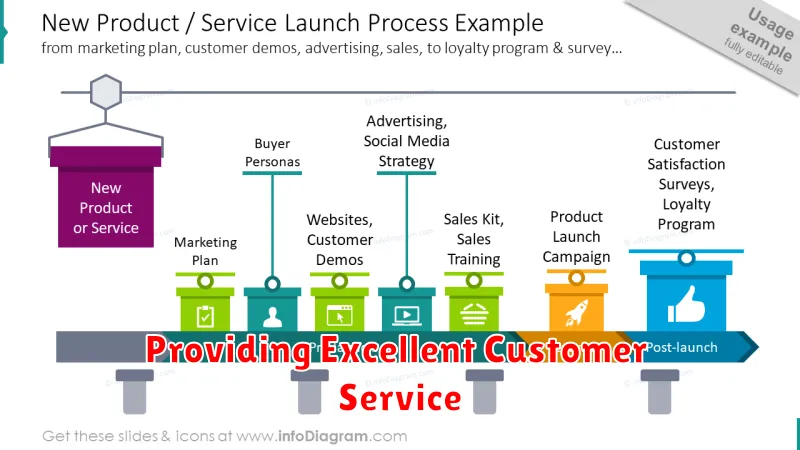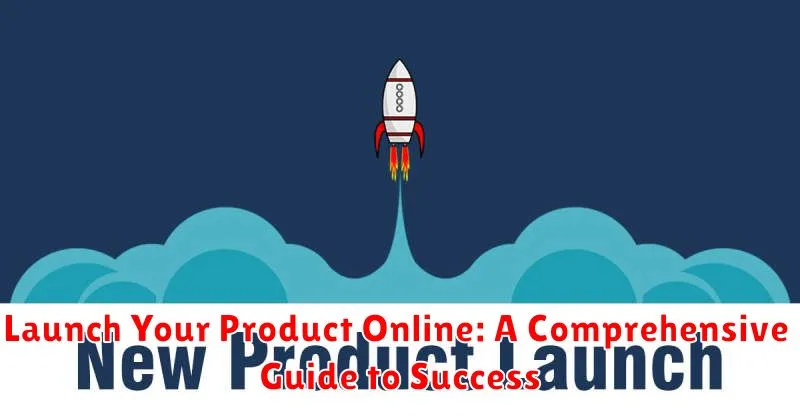Launching a new product online can feel like navigating uncharted territory. This comprehensive guide provides a roadmap to successfully launch your product online, covering everything from market research and product development to marketing and sales. Whether you’re launching a physical product, a digital service, or software, this guide will equip you with the essential strategies and practical steps needed to achieve a successful product launch and drive business growth.
From crafting a compelling value proposition and building a targeted marketing strategy to optimizing your online presence and leveraging e-commerce platforms, we’ll delve into the critical components of a successful online product launch. This guide is designed to help you avoid common pitfalls, maximize your return on investment, and achieve sustainable online success with your new product.
Defining Your Target Audience and Niche
Before launching your product, it’s crucial to define your target audience and niche. Understanding your ideal customer is the foundation of a successful product launch. This knowledge informs your marketing strategies, product development, and overall brand messaging.
Defining your niche involves identifying a specific segment of the market with unmet needs. A well-defined niche helps you focus your efforts and stand out from the competition. Consider factors like demographics, interests, behaviors, and pain points when defining your niche.
Target Audience Research:
- Analyze market trends and competitor analysis.
- Conduct surveys and interviews to gather data directly from potential customers.
- Utilize social media analytics to understand your audience’s online behavior.
By clearly defining your target audience and niche, you can tailor your marketing message, connect with potential customers on a deeper level, and maximize your chances of a successful product launch.
Crafting a Compelling Product Story
A compelling product story is crucial for connecting with your audience on an emotional level and driving sales. It’s not just about features and benefits; it’s about the why behind your product. Why does it exist? What problem does it solve? What makes it unique?
Start by identifying your product’s core value proposition. What is the single most important benefit it offers? Then, weave a narrative around this value proposition, highlighting the problem your product solves and how it improves customers’ lives.
Consider using the “hero’s journey” framework. Position your customer as the hero, facing a challenge. Your product becomes the tool or guide that empowers them to overcome this challenge and achieve their goals.
Authenticity is key. Be genuine in your storytelling. Share your passion for your product and the positive impact it has. Use concrete examples and testimonials to illustrate its effectiveness and build trust with your audience.
Building a Pre-Launch Buzz and Community
Generating excitement before your product launch is crucial for early traction. Building a pre-launch buzz and community fosters anticipation and provides valuable feedback. A strong community becomes a powerful marketing tool, driving organic growth and engagement.
Engage Early Adopters: Identify and connect with potential customers who are likely to be interested in your product. Offer them exclusive sneak peeks and involve them in the development process. Their early feedback is invaluable.
Leverage Social Media: Create dedicated social media accounts to showcase your product’s journey. Run contests and giveaways to attract followers and build anticipation. Use relevant hashtags to expand your reach.
Run a Pre-Order Campaign: Offering pre-orders creates a sense of exclusivity and allows you to gauge demand. It also provides valuable capital that can be reinvested in marketing and further development.
Choosing the Right Online Platform
Selecting the right online platform is crucial for your product launch success. The platform you choose will significantly impact your reach, brand image, and ultimately, your sales.
Consider these key factors when making your decision:
- Your target audience: Where do they spend their time online?
- Product type: Is your product physical or digital? Certain platforms are better suited for specific product categories.
- Budget: Factor in platform fees, transaction costs, and marketing expenses.
- Technical expertise: Some platforms require more technical knowledge than others.
Popular online platforms include:
- E-commerce marketplaces: These offer established customer bases and integrated features (e.g., Amazon, Etsy).
- Your own website: Offers maximum control over branding and customer experience, but requires more setup and marketing efforts.
- Social media platforms: Leverage existing social connections and offer direct selling opportunities (e.g., Instagram Shopping, Facebook Marketplace).
Carefully evaluate your options and choose the platform that best aligns with your product, target audience, and business goals.
Creating High-Quality Product Listings

High-quality product listings are crucial for attracting customers and driving sales. A well-crafted listing provides potential buyers with all the information they need to make a purchasing decision.
Start with compelling product titles that are both informative and concise. Clearly state what the product is and highlight key features.
Use high-resolution images that showcase your product from multiple angles. Consider lifestyle shots to help customers visualize using the product.
Write detailed product descriptions that accurately represent the product’s features, benefits, and specifications. Use bullet points to make information easily digestible. Be transparent about materials, dimensions, and any potential limitations.
Keywords are essential for helping customers find your products through search. Incorporate relevant keywords naturally within your titles and descriptions.
Developing a Marketing and Promotion Strategy
A well-defined marketing and promotion strategy is crucial for a successful online product launch. This involves identifying your target audience and crafting a message that resonates with their needs and desires.
Key elements of this strategy include:
- Market Research: Understand your competitors and identify opportunities to differentiate your product.
- Content Marketing: Create valuable content, such as blog posts and articles, to attract potential customers.
- Social Media Marketing: Utilize social media platforms to engage with your target audience and build brand awareness.
- Paid Advertising: Consider running targeted ad campaigns to reach a wider audience.
- Influencer Marketing: Partner with relevant influencers to promote your product to their followers.
By carefully planning and executing these strategies, you can effectively reach your target audience, generate buzz around your product, and drive sales.
Pricing Your Product Competitively
Pricing is a crucial element of your product launch. Setting the right price can significantly impact your success. Competitive pricing involves strategically setting your product’s price relative to competitors while considering your costs and desired profit margins.
Several pricing strategies exist, including cost-plus pricing (adding a markup to your production costs), value-based pricing (setting price based on perceived customer value), and competitive pricing (matching or undercutting competitor prices). Choosing the right strategy depends on your product, target market, and business goals.
Market research is essential to understanding your competition and customer expectations. Analyze competitor pricing to identify a suitable price range. Consider also the perceived value of your product and what customers are willing to pay. This data will help you determine an optimal price point that is both competitive and profitable.
Managing Inventory and Fulfillment
Efficient inventory management and order fulfillment are crucial for a successful online product launch. Mismanagement can lead to lost sales, disappointed customers, and damaged brand reputation.
Start by selecting an inventory management system. This system should track stock levels, predict demand, and automate reordering processes. Consider factors like scalability, integration with your e-commerce platform, and reporting capabilities.
Choose a fulfillment method that aligns with your business needs. Options include in-house fulfillment, dropshipping, or using a third-party logistics provider (3PL). Each has its own advantages and disadvantages regarding cost, control, and scalability.
Establish clear shipping policies. Determine shipping costs, delivery times, and carriers. Communicate these clearly to customers to manage expectations and avoid potential issues.
Regularly audit your inventory to ensure accuracy and identify potential discrepancies. This helps minimize stockouts and ensures you have enough product to meet demand.
Providing Excellent Customer Service

Customer service is paramount to the success of any online business. A positive customer experience fosters loyalty and encourages repeat purchases. It also generates positive word-of-mouth marketing, which is invaluable in the digital landscape.
Establish clear communication channels. Offer support through various methods such as email, phone, and live chat. Ensure prompt responses to inquiries and address concerns efficiently. A dedicated FAQ section can also preemptively answer common questions.
Personalize the customer experience whenever possible. Address customers by name and tailor interactions based on their purchase history or expressed preferences. This demonstrates that you value their business and fosters a stronger connection.
Implement a streamlined returns and exchange process. Make the policy clear and easy to understand. A hassle-free return experience builds trust and reduces customer frustration. Consider offering free returns or exchanges to further enhance customer satisfaction.
Actively solicit feedback. Encourage customers to leave reviews and participate in surveys. Use this feedback to identify areas for improvement and refine your customer service strategies. Demonstrating a commitment to continuous improvement shows customers that you value their opinions.

